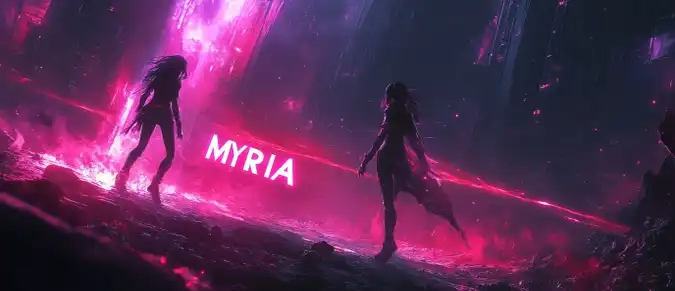Myria — is a high-performance Layer-2 ecosystem for Web3 gaming and digital assets, combining ZK-rollup technology, developer toolkits, Myria Nodes infrastructure, and convenient NFT utilities. The platform aims to solve key blockchain gaming challenges — high transaction costs and limited scalability — creating an environment where gameplay mechanics and asset ownership function quickly, securely, and without fees.
- The concept of Myria and its purpose
- Architecture and Layer-2 technical model
- Myria ecosystem and its key components
- Economic model and the MYRIA token
- Development prospects and market challenges

1. The concept of Myria and its purpose
Myria is a gaming-focused Layer-2 platform designed to overcome the fundamental limitations of Web3 gaming: low transaction throughput, high gas fees, and the complexity of blockchain integration into games. The platform uses ZK-rollup technology to achieve scalability and allows developers to build NFT-based, token-based, and economy-driven mechanics faster.
An important feature of Myria is its specialization in gaming applications rather than universal DeFi scenarios. With dedicated tools, SDKs, and its own marketplace, Myria forms a complete infrastructure where studios can implement ownership-based economies and users can interact with digital assets in a seamless gaming environment.
2. Architecture and Layer-2 technical model
Myria’s architecture is built on StarkEx technology, which provides Zero-Knowledge proofs and aggregates thousands of transactions into a single batch submitted to Ethereum. This approach ensures high throughput and transparency without compromising security, which is crucial for projects with active user traffic.
The platform offers SDKs for Unity, Unreal Engine, and HTML5, making Web3 game development easier. Myria’s DSL language enables asset tokenization without writing complex smart contracts. Myria Nodes play a key role in decentralization, distributed storage, and maintaining network stability. Node operator rewards stimulate infrastructure growth and community participation.
3. Myria ecosystem and its key components
The Myria ecosystem is designed to connect players, developers, and infrastructure elements into a unified environment where every component reinforces the others. The platform aims to ensure a seamless interaction between gameplay mechanics, digital assets, and network processes, forming a complete Web3 world. Below are the core elements that build the foundation of the Myria ecosystem:
Core components of Myria:
-
Players who own NFT assets and participate in the in-game economy.
-
Game studios integrating Web3 mechanics via SDK.
-
Myria Nodes ensuring decentralization and load distribution.
-
NFT marketplace supporting asset trading and collections.
-
Myria Wallet for storing and transferring tokens and NFTs.
-
Tokenization tools required for creating in-game items and assets.
This structure makes the platform comprehensive: studios create content, nodes maintain the network, and users participate in the economy, ensuring natural ecosystem growth.
4. Economic model and the MYRIA token
The MYRIA token is the core of the project’s economic system. It is used for network payments, purchasing node licenses, governance participation, and future staking mechanics. To organize the token’s key parameters, the tokenomics table is provided below.
| Distribution category | Share of total supply | Vesting conditions | Purpose |
|---|---|---|---|
| Ecosystem fund | 40% | 36 months | Project support, grants, partnerships |
| Myria Nodes | 36% | Rewards + halving | Decentralization and network support |
| Project development | 19% | 6-month cliff + 48 months | Team, infrastructure, technological growth |
| Liquidity (TGE) | 3% | No lock | Market and exchange liquidity |
| Reserve | 2% | No lock | Risk mitigation and flexibility |
The model is designed to incentivize players, developers, and node operators. Myria Node licenses can be purchased only with the MYRIA token, creating sustainable demand and long-term activity within the ecosystem.
5. Development prospects and market challenges
Myria’s future largely depends on its ability to attract gaming studios and communities, forming a multi-layer Web3 gaming ecosystem. The platform’s technological base allows it to compete with other L2 solutions, and the availability of SDKs increases the likelihood of widespread adoption among developers.
However, the project faces strong competition: gaming blockchains, EVM-compatible networks, and other Layer-2 scaling solutions continue to evolve rapidly. Success will depend on high-quality game launches, token distribution dynamics, stable node infrastructure, and user engagement. Despite the challenges, Myria has the potential to become a significant player in the Web3 gaming sector due to its game-focused architecture and technological advantages.




